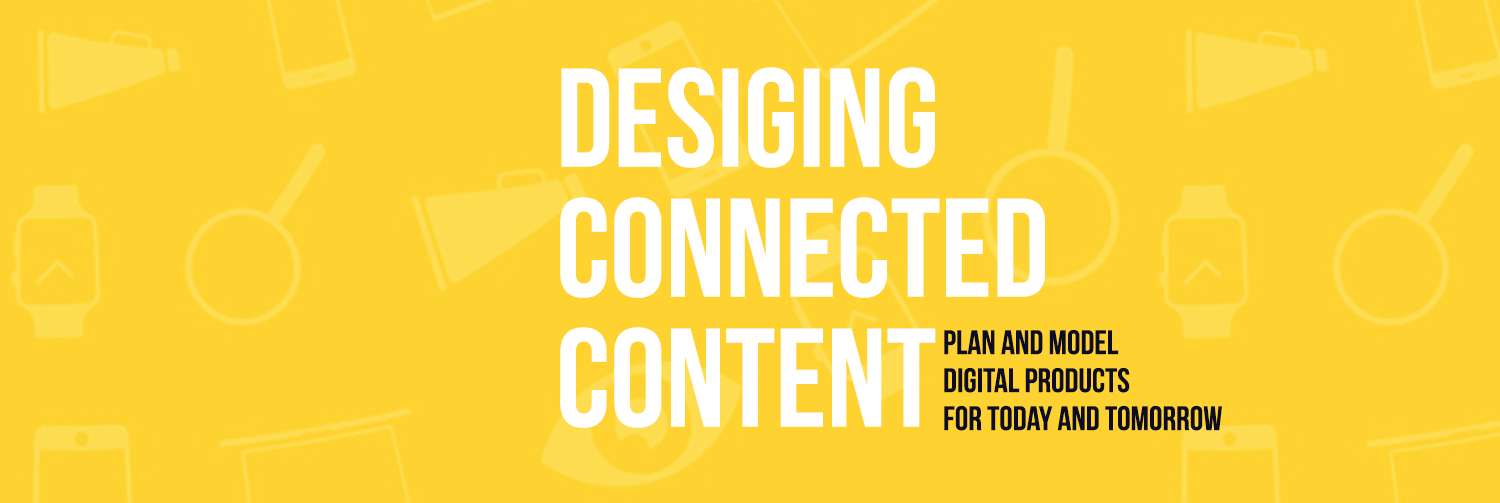
This material is being reprinted with the permission of Pearson. For more information, please visit peachpit.com/designingcontent. The following excerpt is from Chapter 7, Section 1, ‘UX for Content’.
Once upon a time, “going online” felt like traveling to another dimension. The screech of a modem signaled your arrival, and from there on you were pretty much on your own. A long, slow hunt for information through pages that took forever to load.
Back then, long-form text content was everywhere. The web took its cues from print publishing, with its metaphors of pages, headlines, and body copy. (Even today, that notion of a “page” as a unit of content is hard to shake.) You’d hear phrases like “content is king” and “if you build it, they will come.” Many businesses interpreted this as a “more is more” strategy. Filing cabinets full of multipage documents and PDFs emptied out onto the internet. Here’s everything! You go right ahead and figure out what’s useful to you!
Times have changed. In the past few years, content strategists have shone a spotlight on the need for content that efficiently meets the information-seeking needs of known audiences. Content that focuses only on what’s useful and presents a structure that helps build understanding, in other words, content that is explicitly designed.
Content design follows the broader principles of user experience (UX) design. UX designers start their process by figuring out who their audience is and what those people need most. Next, they explore possible solutions to meet those needs. And through a cycle of feedback and learning, they refine a solution until the original goals are met.
UX design considers an entire experience, in which content plays a pivotal part. However, many designers direct their efforts to improving the efficiency of the interface rather than critically evaluating the content itself. This is where you come in. As the content specialist, you make sure the content is well structured, focused, and appropriate to the audience. We could write a whole book on what makes content well designed, but the content strategist Sarah Richards does it so much better in her book Content Design. That said, we offer some general principles to consider:
Well-designed content is useful.
Bottom line, job one. Content doesn’t sit there to look pretty. It has a job to do. No one comes to your website to hang out. They aren’t taking time out of their day to “experience” your “brand story.” They’re coming to get stuff done. Whether your content is there to inform, educate, inspire, or even entertain, it has a goal to meet.
Well-designed content is usable.
It not only provides the information people need but makes that information easy to access, understand, and act upon. It has audience-appropriate terminology and literacy level, clear and consistent formatting and presentation, and support for different devices. How often have you felt the pain of trying to find and read a restaurant menu online, awkwardly pinching and zooming around a PDF? Good usability design isn’t only for interfaces. It’s needed for the content itself.
Well-designed content is findable.
Content that people can’t find is no better than content you didn’t write. Being findable means that it’s available in open formats (such as HTML) and is crawlable by search engines. It means adding metadata that describes to those engines what your content is about. It means that it’s housed within well-designed information architecture so that when people visit your product, they can navigate efficiently toward their destination. And above all, it means creating content that maps to the things people look for.
Well-designed content is focused.
No one ever curled up in their comfiest armchair, poured a glass of wine, and lost themselves in a good website. We all want to get in, grab the information we’re looking for, and get the hell out. People are busy and distracted. They’re half-reading your content on their phone as they walk to work. Life’s too short for meandering content. TL;DR (too long; didn’t read), as they say. Well-designed content stays on topic. As short as it needs to be, but no shorter. It puts the most important information first. Each piece is self-contained, making sense even when read out of sequence.
Well-designed content is targeted.
In UX design, there’s a common axiom: “You are not your user.” It’s a reminder that the people we make things for have different needs and perspectives than we do. Different areas of interest and questions to ask. A set of animal videos aimed at kids would be very different than a collection aimed at zoologists. The reason you base content design on user and domain research is to figure out the most pressing things for your target audience.
Well-designed content is distinctive.
Whatever your topic, you’re not the first to write about it. When you publish your content to the web, you’re contributing to a wider conversation. What’s your point of view? How is your take different from, or more valuable than, what’s already out there? When people look for information, they don’t immediately seek out one source and close the door on all the others. They “pogo stick” between a set of search results and the destination pages listed. Back and forth, they scan and skim-read, hunting for answers until they find a good enough solution. When they land on your content, what will make them stop and take notice?
Well-designed content is connected
As designer Charles Eames remarked, “Eventually everything connects.” The pursuit of knowledge is a never-ending journey. Understanding of a subject comes not only from the content but also from the context. The way each piece of content links to another helps us understand how concepts relate. Create links between your pieces of content. And when your content inventory doesn’t hold all the answers, link to the content of others. Cross-referencing information from many sources is what the world wide web was designed to do.
Designing effective content is challenging, but the work you’ve done so far has set you up for success. You’ve researched what experts consider authoritative. You sense-checked this against what your audience has told you they want to see. And you designed models that define how those things are connected. Time to fill in the blanks.
Events, Resources, + More
New Data: Content Ops + AI
Get the latest report from the world's largest study of content operations. Benchmarks, success factors, commentary, + more!
The Ultimate Guide to End-to-End Content
Discover why + how an end-to-end approach is critical in the age of AI with this comprehensive white paper.
The Content Advantage Book
The much-anticipated third edition of the highly rated book by Colleen Jones is available at book retailers worldwide. Learn more!
20 Signs of a Content Problem in a High-Stakes Initiative
Use this white paper to diagnose the problem so you can achieve the right solution faster.







Comments
We invite you to share your perspective in a constructive way. To comment, please sign in or register. Our moderating team will review all comments and may edit them for clarity. Our team also may delete comments that are off-topic or disrespectful. All postings become the property of
Content Science Review.